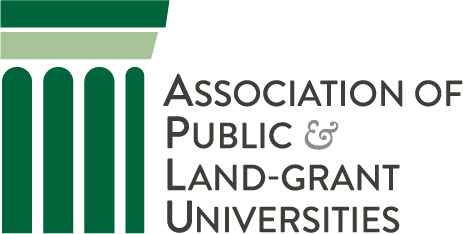Colleges and universities have growing pools of data available to them about how their students learn, but many professionals are intimidated by this resource, unsure of how to access it so it can inform teaching practices, program-level course design, or institutional planning. Many others are simply unaware of the data available to them.
“In higher ed, a lot of data goes unused,” says Denise Nadasen, Assistant Vice President of Institutional Data and Analytics at the Association of Public and Land-grant Universities (APLU). “Even when data is used, it might not always be in the most effective ways.”
The growth of digital learning tools and other software applications in student support, recruiting, and other operations means colleges and universities have a tremendous resource available to them. An effective way to put that resource to work, Nadasen says, is fostering a community of practice devoted to data literacy. A community of practice can nurture an institutional culture that embraces data while supporting individual faculty and other professionals as they build specific skills. It also builds understanding and transparency about what data is available that can be used to support students.
Nadasen leads APLU’s Data Literacy Institute and recently has been been helping colleges and universities grow their communities of practice through a program on Building an Academic Data Culture to Support Student Success in partnership with Every Learner Everywhere. The service includes workshops, coaching, and consultation for cross-functional collaborative teams working to improve how they use data analytics. It can be provided in a range of synchronous, asynchronous, in-person, and remote formats.
“Data literacy is having individuals who know how to access the data and can apply it to a specific problem or area where they can analyze it and understand what they’re seeing,” Nadasen says. “They’re able to take that information and figure out what to do with it. And a data culture is made up of the behaviors of faculty and staff who value and encourage the use of data to improve decision making.”
Data literacy and community of practice
A community of practice is effective at fostering data literacy because of the varied professional roles and perspectives brought to the table. Whereas an individual faculty member may have difficulty trying to apply a data-informed change, incorporating course designers and department chairs into that same initiative could have drastically different results.
In the cohorts Nadasen has worked with in the APLU Data Literacy Institute and in Building an Academic Data Culture to Support Student Success, collaborations have included student success professionals, advisors, institutional researchers, faculty, department chairs, associate provosts, and more.
She says one of the first steps institutions can take to form a community of practice that fosters a data-oriented culture is to identify the existing “data literacy champions” who can serve as peer mentors to the more data-hesitant faculty. A data culture won’t succeed as a one-person operation but needs a network of professionals who understand and trust the data, trust each other, and trust their own growing data literacy.
Facilitating a data culture
A community of practice is helpful for confronting common institutional barriers to using data effectively. Time constraints, for example, are always one of the greatest challenges to creating a data culture. Busy schedules make it difficult to sustain data-informed practices.
Ethical data usage is another priority that a community of practice can help with. “Data security is one thing,” Nadasen says. “We want to make sure we don’t collect data that we’re not going to use, and that what we do collect is kept in a secure location. But the ethical part of it is asking ourselves if we’re being mindful of how equity issues are impacted by our analysis.”
Disaggregating data to illuminate the college experience of particular groups such as minoritized students is one way to move toward more equitable uses of data. But Nadasen warns against uncritically relying on historical data.
“If there are patterns of bias in historical data and I use those to build algorithms to predict the future, I’m just repurposing the biases,” she says. “Systemic bias creates a discrepancy in the data that the data itself doesn’t recognize. So an ethical use of data means keeping in mind that it doesn’t necessarily represent students equally.”
Related reading — Communities of Practice in Higher Education: A Playbook for Centering Equity, Digital Learning, and Continuous Improvement
Building a good foundation for a data culture
To build the capacity to work on those and other challenges, Nadasen works with emerging communities of practice on three critical parts of their data culture:
Data governance — A solid data management plan increases trust and reduces friction so educators can put data to work in their classes.
Leadership — Having leadership that values, promotes, and rewards the use of data creates a cohesive practice across the institution.
Training — Faculty and other professionals across the institution need ongoing support to develop data-informed practices.
The goal of developing those aspects of an institution’s data culture is to build up access and confidence.
“The first and most important thing is that folks have access to the data they need,” Nadasen says. “That’s the biggest barrier we’ve identified through the work we do. The second thing is an attitude where people are not afraid to use the data. They feel comfortable with their skills using the data, and they have confidence that the data are accurate.”
Learn more about the Building an Academic Data Culture to Support Student Success service


